The single focus of Varicose to Perfect is the treatment of vascular diseases such as varicose veins and spider veins. Dr. Sinnathamby is a highly-skilled, Board-certified physician with decades of experience in endovascular medicine.
Dr. Sinnathamby is a Diplomate with the American Vein & Lymphatic Society, a distinction that is the result of training and experience treating veinous disease with exceptional results. Our dedicated focus and expertise combined with our state-of-the-art treatment facility make us Springboro’s premier choice for the treatment of vascular conditions.
We provide a wide range of services and treatment options for conditions ranging from Varicose Veins and Venous Leg Ulcers to Hand Veins. Vein disease can be the cause of a range of signs and symptoms that impact your quality of life. Treating veinous disease early and effectively will minimize its impact and support your overall physical wellness.
When varicose veins and other vein conditions are left untreated, it can lead to pronounced bulging, discomfort, and the risk for ulceration as blood flow decreases. Dr. Sinnathamby provides comprehensive diagnostics and treatment options that are tailored to the needs of each patient, depending on the severity of their disease or cosmetic concerns.
Chronic Vein Disease
We offer treatment for chronic venous insufficiency (CVI) to alleviate symptoms and manage the risk of additional problems. Chronic venous insufficiency is the result of faulty valves in the veins of the legs, allowing blood to pool in the lower calf and ankles. Over time, this can lead to discomfort and leg ulcers. Signs of CVI can include:
- Feeling of heaviness in the legs
- Skin that is itchy or feels very tough on the surface
- Pain in the lower legs
- Varicose veins
Common causes and risk factors for CVI include:
- Being overweight, obese
- Having a deep vein thrombosis (DVT), which can damage leg veins
- Sedentary lifestyle
- Smoker
- Family history of blood clots or venous disease
Learn More About Vein Conditions:
Insurance Covers Most Vein Disease Treatments
Varicose to Perfect is a full-service vein treatment center. Part of our service is to help you with any of your billing and insurance needs. Insurance covers most vein disease treatments.
Our staff will take care of the necessary billing and documentation to get pre-approval from your insurance company. We also have payment plans for patients who do not have insurance or whose treatment is not covered by insurance.
